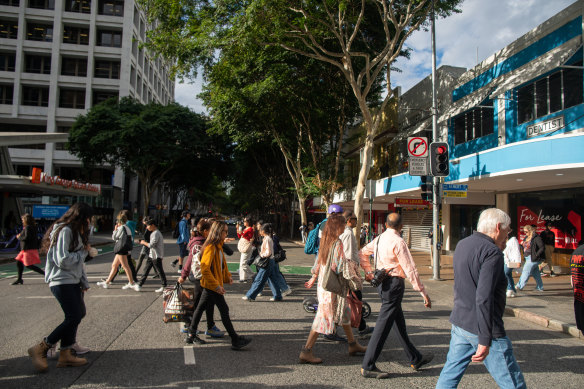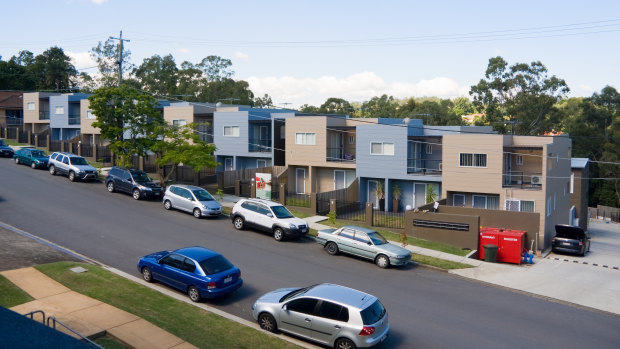This was published 2 years ago
New figures predict another 2.2m people will make south-east Qld home
By Tony Moore
An extra 2.2 million will call south-east Queensland home by 2046, as the population in the region swells to 6 million people.
Almost 500,000 people are projected to move into the Brisbane City Council area alone, increasing the population to 1,721,000 by 2046.

Brisbane will need to accommodate almost 500,00 additional residents by 2046.Credit: Rhett Hammerton
The growth projections have been acknowledged by the Queensland government and local councils as the government prepares to release south-east Queensland’s new draft regional plan.
Deputy Premier and State Development Minister Steven Miles described the era as Queensland’s “decade of opportunity”.
“People are moving to Queensland in droves and who can blame them,” Miles said.
“Why live in Melbourne, when you can live in south-east Queensland?”
Quick facts: What Queensland’s population planners have learned
- SEQ’s population is now about 3.8 million.
- SEQ’s population will increase by 2.2 million to about 6 million by 2046.
- Single-person households in SEQ will increase from 23.4 per cent of homes to 40.5 per cent.
Source: Queensland’s Department of State Development July 2023
To help respond to growth pressures, which have prompted ongoing housing talks, the government allocated $88.7 billion to a four-year statewide building program in the last budget.
“We are in our decade of opportunity. We have a strong economy,” Miles said.
“We have a 10-year pipeline of infrastructure projects in the lead up to and beyond Brisbane 2032. And we are creating good, secure jobs in the key industries that will help us decarbonise.”
However, Miles warned that such significant population growth – fuelled by interstate and overseas migration – would require changes to planning laws and building types.
For example, south-east Queensland’s population will continue to age and more people will live by themselves, a demographic issue identified by Brisbane City Council earlier this year.
The proportion of one-person households will increase substantially from 23.4 per cent in 2021 to 40.5 per cent in 2046.
Miles said the demographic shift would lead to more units, townhouses and modern terrace houses, and ongoing efforts to house people closer to employment, service and retail centres.
“So even without counting the massive population increase, we still need more homes to house the same number of people,” Miles said.
“These changes mean we need more, smaller homes in the mix, to deliver more housing options.”

Brisbane is squeezing into smaller lots as population swells. Credit: Nine
More details on the likely distribution of population growth, and areas expected to accommodate more people, will be in the new draft regional plan.
Miles said it was important to allow for people to age in their community with more appropriate housing options.
“My elderly neighbour shouldn’t have to clean a four-bedroom, two-storey house,” he said.
“They should be able to downsize to a unit or terrace, without being forced to move away from their community.”
In February, Moreton, Sunshine Coast and Ipswich councils pointed out the differences in population growth predictions from the 2017 regional plan and how development was distorted.